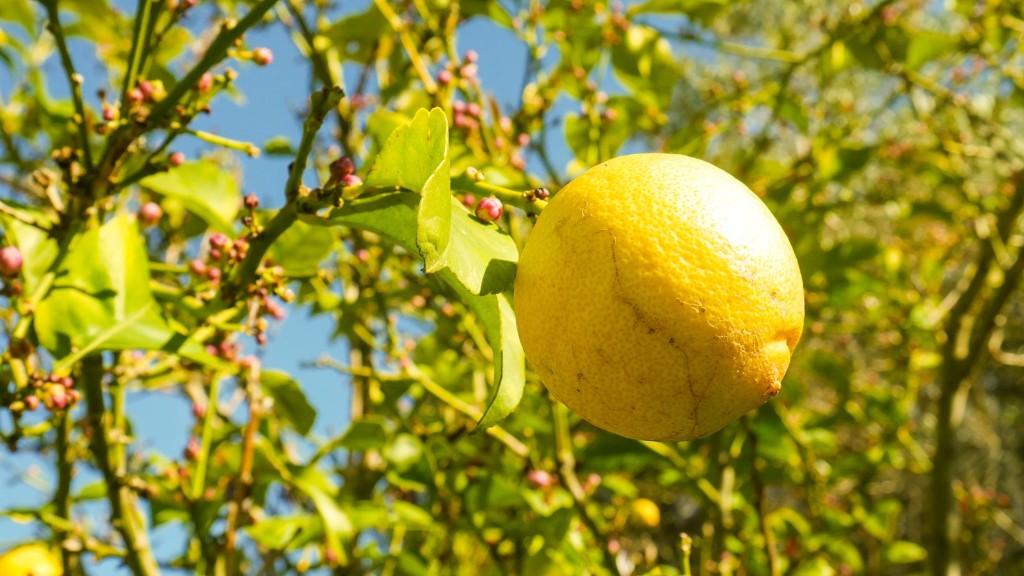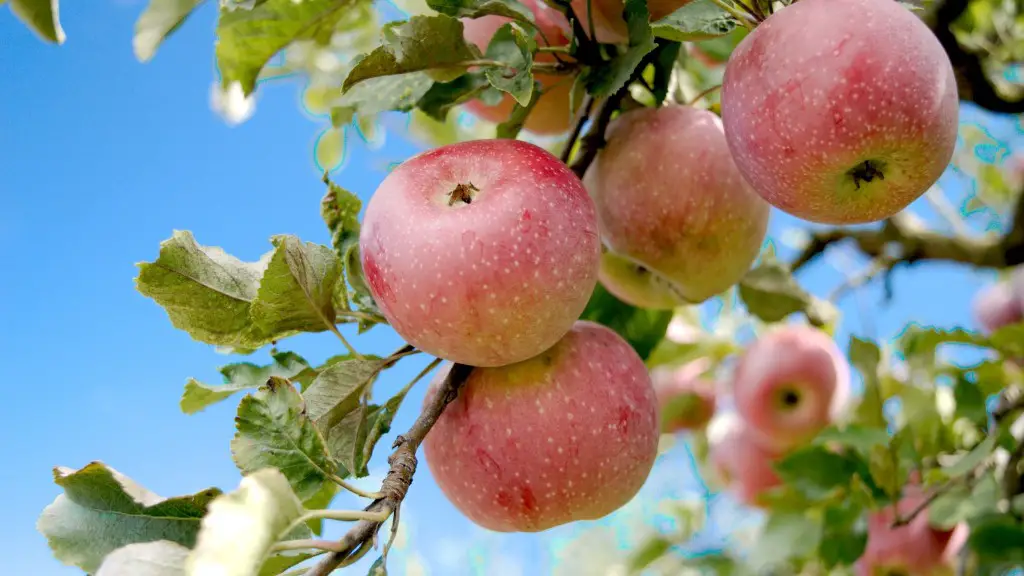Pruning an Avocado Tree
Avocado trees are beloved in many parts of the world for their delicious fruits, but their size and behavior can be a challenge for those who care for them. Pruning an avocado tree can help to maintain the desired shape and size, encourage the development of more fruit, and generally take care of the plant.
Background Information
Avocado trees are perennial plants that thrive in tropical and subtropical regions but are also suitable for growing in USDA hardiness zones 8b through 11. They are often grown as ornamental plants, due to their lovely foliage, but they are also cultivated to produce avocado fruits. Pruning an avocado tree is necessary to maintain its health and productivity and should be done regularly to help the tree develop in its desired shape.
Why Should You Prune an Avocado Tree?
Pruning an avocado tree helps to remove dead or diseased branches, encourage more dense foliage, and promote fruit production. The tree should be pruned in the late winter or early spring, before the maturation of new leaves. This allows the avocado tree to put all of its energy into generating new branch development and fruit, instead of expending it on the dead, diseased, or otherwise unattractive branches. A properly pruned avocado tree will yield more, larger, and tastier fruit.
When and How to Prune an Avocado Tree
When pruning an avocado tree, the goal is to create a strong branch structure with an even canopy. Begin by removing dead or diseased branches, crossing branches, or branches that rub or cross each other, as these can cause damage to the tree. The next step is to bring the canopy height to the desired level by trimming away any long shoots; it’s generally best to do this in the late winter or early spring before the maturation of new leaves. Finally, selective pruning of lateral branches that are too dense can be done to improve air circulation and light penetration.
Tools Needed
Pruning an avocado tree requires a few basic tools. A pair of sharp, clean pruning shears is essential for cutting through branches. A gentle cleaning solution, such as mild soap and water, can be used to clean the pruning shears after each use. Before beginning pruning, it’s important to assess the tree’s needs and draw up a plan; a ladder may be needed as well, if the tree is tall or the pruners are not tall enough to access the upper branches. Finally, gloves and safety goggles should be worn to protect against potential hazards like broken branches or flying debris.
Potential Pruning Hazards
Pruning an avocado tree can be hazardous if the pruners are not careful; the wrong cut can damage the tree, resulting in ill health or even death. It’s important to know exactly what cuts to make and where; from there, the pruners can work steadily and carefully to ensure the health of the tree. Additionally, the pruners should be aware of any potential hazards, such as broken branches or falling fruits, and take the necessary precautions to protect themselves and the tree.
Fertilizing an Avocado Tree
Avocado trees need to be fertilized regularly in order to remain healthy and productive. The right amount and type of fertilizer can vary depending on the age and size of the tree, as well as the local soil conditions. Generally, mature avocado trees need to be fertilized twice a year, with most of the feeding taking place in the late winter or early spring. The fertilizer should be a balanced mix of nitrogen, phosphorus, and potassium, as well as additional trace elements.
Types of Fertilizers
Organic fertilizers, such as compost or manure, are the best option for avocado trees, as they provide the tree with essential nutrients and beneficial microorganisms. Chemical fertilizers can be used as well, but these should be applied with caution. The chemical fertilizer should contain a mix of essential macro and micronutrients, and the amount to be applied should be calculated based on the age and size of the tree, as well as the soil type.
When and How to Fertilize
When fertilizing an avocado tree, it’s important to consider local soil conditions as well as the age and size of the tree. For established trees, the fertilizer should be applied in the late winter or early spring, before the maturation of new leaves, and the fertilizer should not be allowed to come in contact with the tree’s green foliage. It’s best to water the tree thoroughly before and after fertilizing, to help the fertilizer reach the tree’s roots and ensure that the nutrients are absorbed.
Toxicity
It’s important to be aware of the potential dangers of chemical fertilizers; when over-applied, the chemicals can build up in the soil and cause toxicity to the tree or surrounding environment. To avoid this, follow label instructions closely when applying any chemical fertilizer. Additionally, be sure to protect yourself and your environment by wearing gloves and safety goggles.
The Benefits of Fertilizing
Fertilizing an avocado tree regularly helps keep the tree healthy and productive. Fertilizing helps to supply the tree with essential nutrients, encourages new growth, and helps to create a strong branch structure. With the right amount and type of fertilizer, an avocado tree can thrive and produce delicious, juicy avocado fruits year after year.
Pest Control
Pests can be a major problem for avocado trees and can dramatically reduce yields if not managed properly. Sap-sucking pests, like mealybugs and scale, are common pests of avocado trees, as well as fungi and bacteria, like root rot and leaf spot. Proper management of these pests is essential to ensure the health of the tree, and the level of management will depend on the severity of the infestation.
Identifying Pests
The first step in pest management is to accurately identify which pests are present; a basic knowledge of pest types, signs of infestation, and potential damage can help. If a pest infestation is suspected, take a sample of the infested area or bring a sample of the pest to a local garden center or extension office for identification.
Organic and Chemical Controls
Once the pests have been identified, a management plan can be developed to remove them from the tree. Organic methods, such as beneficial predators, cultural controls, and pheromone traps, are the preferred method of pest management, as they have less of an impact on the environment. Chemical pest management methods, such as insecticides and fungicides, can also be used, but these should only be applied as a last resort and in accordance with the label instructions.
Preventative Measures
The best way to manage pests is to prevent them before they become a problem; this can be done through careful monitoring of the tree and the surrounding environment. Regularly inspect the tree for signs of infestation and take steps to improve the health of the soil, such as adding mulch or organic matter. Additionally, avoid introducing new pests with foreign plants, soil, or equipment.
The Impact of Pest Management
Pest management can have a significant impact on the health, productivity, and yields of an avocado tree. If pests are left unchecked, they can cause significant damage to the tree, resulting in reduced yields and ill health. On the other hand, proper management of pests can help to improve the health of the tree and increase yields.
Nutrition
Avocado trees need to be provided with essential nutrients in order to remain healthy and productive. Nutritional deficiencies can lead to a range of problems, including poor yields, stunted growth, and poor fruit quality. The right mix of essential minerals, including nitrogen, phosphorus, and potassium, as well as additional trace elements, must be provided to ensure the health of the tree.
Soil Conditions
The pH and nutrient levels of the soil should be tested regularly to ensure the soil is in the optimal range for avocado growth. Generally, the pH of the soil should be between 6.0 and 6.5; if the soil is too acidic or too alkaline, the tree will not be able to absorb the essential nutrients it needs to remain healthy. Additionally, the soil should be tested for nitrogen, phosphorus, and potassium levels, as well as additional trace elements.
Nutrient Requirements
The exact nutrient requirements of an avocado tree can vary depending on its size and age, as well as the local soil conditions. Generally, a balanced mix of slow-release fertilizers, such as compost or manure, is ideal for an avocado tree, as these organic fertilizers provide the tree with beneficial microorganisms and essential nutrients. Alternatively, chemical fertilizers can be used, but these should be applied cautiously, with the amount calculated based on the age and size of the tree, as well as the soil type.
The Benefits of Nutrition
Providing an avocado tree with adequate nutrition is essential for its health and productivity. By applying the right mix of nutrients, avocado trees can make more efficient use of water, resulting in larger and juicier fruits. Additionally, proper nutrition helps the tree to resist disease and pest infestations and encourages new growth and development.
Watering
Avocado trees need regular watering to remain healthy and productive; however, they are vulnerable to overwatering, so it’s important to water them carefully. An avocado tree requires approximately 1 inch of water per week, and this should be applied evenly throughout the root zone. Generally, a deep watering once a week is ideal, but the exact amount and frequency can vary depending on the local soil conditions and the age and size of the tree.
How to Water an Avocado Tree
To water an avocado tree, shake off the soil from the top of the root ball and gently pour water into the hole until it’s saturated. As the tree grows and establishes a larger root system, it’s important to water more deeply, working to thoroughly soak the root zone. To test if the tree is adequately watered, insert a spade or garden fork into the soil near the trunk; if the soil is dry a few inches below the surface, then the tree is in need of water.
Drainage and Waterlogging
It’s important to be aware of potential drainage problems and waterlogging, as overwatering can be damaging and even deadly to an avocado tree. Avoid planting an avocado tree in an area that is prone to flooding or has poor drainage, and be sure to monitor the soil’s moisture level, taking steps to divert any water that pools near the roots of the tree.
Importance of Watering
Water is essential for the health and productivity of an avocado tree, as it helps to transport essential nutrients from the soil to the tree. Regular and deep watering is also essential for helping the tree resist disease and pests, for encouraging new growth and development, and for producing larger and juicier fruits.
Protection from Frost
Avocado trees are sensitive to frost and low temperatures, making protection from frost essential for their survival. Young and newly-planted trees are especially vulnerable to frost damage and can suffer serious injury or even death if not provided with proper frost protection.
How to Protect an Avocado Tree
The best way to protect an avocado tree from frost is to keep its soil moist; dry soil is more susceptible to frost damage. Additionally, a winter mulch can be applied to help insulate the soil and protect the tree’s roots from the cold. A cold frame or a cloche can also be used to provide additional protection from cold weather. It’s important to keep the plants covered until the temperatures start to rise, as any sudden exposure to cold can damage the tree.
Frost Damage
Frost damage can cause severe damage to an avocado tree, resulting in




